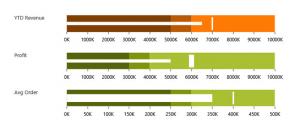Review of the book "Think fast, think slowly" by Kahneman
Think fast, think slow is a book published in 2011 by the psychologist Daniel kahneman (Tel Aviv, 1934). Currently, he is Professor of Psychology at Princeton University.
A specialist in cognitive psychology, Kahneman's main contribution to economics consists in the development, together with Amos Tversky, of the so-called Perspective theory (prospect theory), according to which individuals make decisions, in environments of uncertainty, that deviate from the basic principles of probability. These types of decisions were called heuristic shortcuts.
Kahneman won the Nobel Prize for... Economy!
In 2002, together with Vernon Smith, was awarded the Nobel Prize in Economics for having integrated aspects of psychological research into economic science, especially with regard to human judgment and decision-making under uncertainty.
We recently included Daniel Kahneman in our ranking of the 12 most influential psychologists today. As the only psychologist who has managed to win a Nobel Prize, his inclusion is more than deserved.
Think fast, think slow: a compilation of his main ideas
In the book Think fast, think slow, Kahneman synthesizes his research on the way of thinking of human beings. The author maintains the widely accepted thesis in current psychology on the two modes of thought: the System 1, fast, intuitive and emotional, and the System 2, slower, thoughtful and rational.
The first provides conclusions automatically, and the second, conscious answers. The peculiar thing is that, in most cases, we do not reflect on which of the two has taken the reins of our behavior.
A book divided into five thematic sections
The book is divided into five parts. In the first part, he presents how the two systems work and how judgments and decision-making are produced by both. The second part delves into the heuristics of judgments and places special emphasis on the difficulties of System 1 to think statistically. The third part focuses on the inability to recognize uncertainty and our own ignorance and the overestimation of what we think we understand about the world around us.
The fourth part delves into the nature of economic decisions and raises the theory of perspectives under the hypothesis of the two systems. In the fifth part of the book Kahneman makes a distinction between what he calls "the experiencing self" (related to System 2) and "the remembering self" (related to System 1). Sometimes the goal of happiness of both me leads to clearly opposed situations.
Finally, and in a kind of conclusion, the implications of the three distinctions made in the book are examined: the me what do you remember in front of me experience, decision making in classical economics versus decision making in behavioral economics, and System 1 versus System 2.
Various considerations and reflections on this book
We can consider Kahneman's starting hypotheses extremely original and attractive. In my opinion, it extends the concepts of System 1 and System 2 to all thought processes. This vision perfectly models “the first thing that crossed my mind” decision-making versus those decisions we make after careful reflection. We can see an example of this in a simple problem that Kahneman himself poses:
A bat and a ball together cost $ 1.10
The bat costs $ 1 more than the ball
How much does the ball cost?
The immediate answer is given by System 1:
The ball costs $ 0.10
Only an invocation of System 2 will give us the correct answer.
The System 1 and the System 2, a simple way to conceptualize thinking
Physiologically speaking, we could even postulate that System 1 responses emerge directly from the limbic system, naturally transformed and processed by the neocortical areas, while those of System 2 that imply a more elaborate processing, (the intellectual-cognitive-reflective) could only be carried out in the most modern cortical areas located in the frontal cortical zone prefrontal.
This consideration would place System 2 as a structure exclusively typical of higher animals, evolved evolutionarily as a complement to System 1.
Possible criticisms of Kahneman's work
Kahneman's hypotheses could be labeled overly simplistic and somewhat anthropocentric, but as soon as we reflect, the analysis of behavior from this point of view allows us to explain a large number of reactions observed in the human behavior in general and in particular, in the decision-making process that to a greater or lesser extent should always be taken in environments of uncertainty.
The descriptions of the different hypotheses that are raised in the book are, in my opinion, excessively repetitive and not very synthetic (they could really be described in a few paragraphs) and the author intends to demonstrate its validity by exposing, somewhat disorderly, the results of a considerable number of experiments, what do not always seem to be the most suitable and some of which do not provide overly consistent arguments.
Unfortunately, Kahneman does not delve too deeply into the processes of gestation and birth of the different hypotheses that it presents, processes that would probably facilitate its assimilation by the readers.
Between the academic and the commercial ...
The book seems conceived more as a popular book for the general public (in the line of a best-seller or a self-help book) than as a scientific work. The examples, experiments and particular cases are profusely described, sometimes in a somewhat chaotic and disorderly and without a very defined common thread, illustrating various aspects of the dualities presented.
Despite its informative nature, the book is not exempt from scientific rigor. All the statements made and each one of the experiments are adequately referenced. At the end, all the bibliographic references, the author's notes and also the conclusions are included.
Most interesting: the study on the anchor effect
After reading it, one cannot help feeling at once identified and surprised by some of the mental processes described in the book. Loss aversion and anchor effect. In the first, we are shown the natural tendency of people to avoid losing rather than making a profit. This leads to risk aversion when evaluating a potential gain, as avoiding a loss is then preferred to receiving a benefit.
The call anchor effect (or 'anchoring effect') tends to make us take as a reference the first offer (first data) that they have given us, mainly when we do not have complete and accurate information. It is also worth noting the effort made by Kahneman to numerically quantify the intensity of the anchor effect, a quantification that is not easy to perform in most psychological processes, The anchor effect is widely used in economic trading or trading environments. marketing.
A book recommended to professionals and curious
In summary, the reading of this book would be recommended not only to professionals of the psychological sciences but in general to anyone interested in getting to know themselves a little better, delve into the processes that determine their decisions and equip themselves with mechanisms that allow them to move one step further on the path to their happiness.


